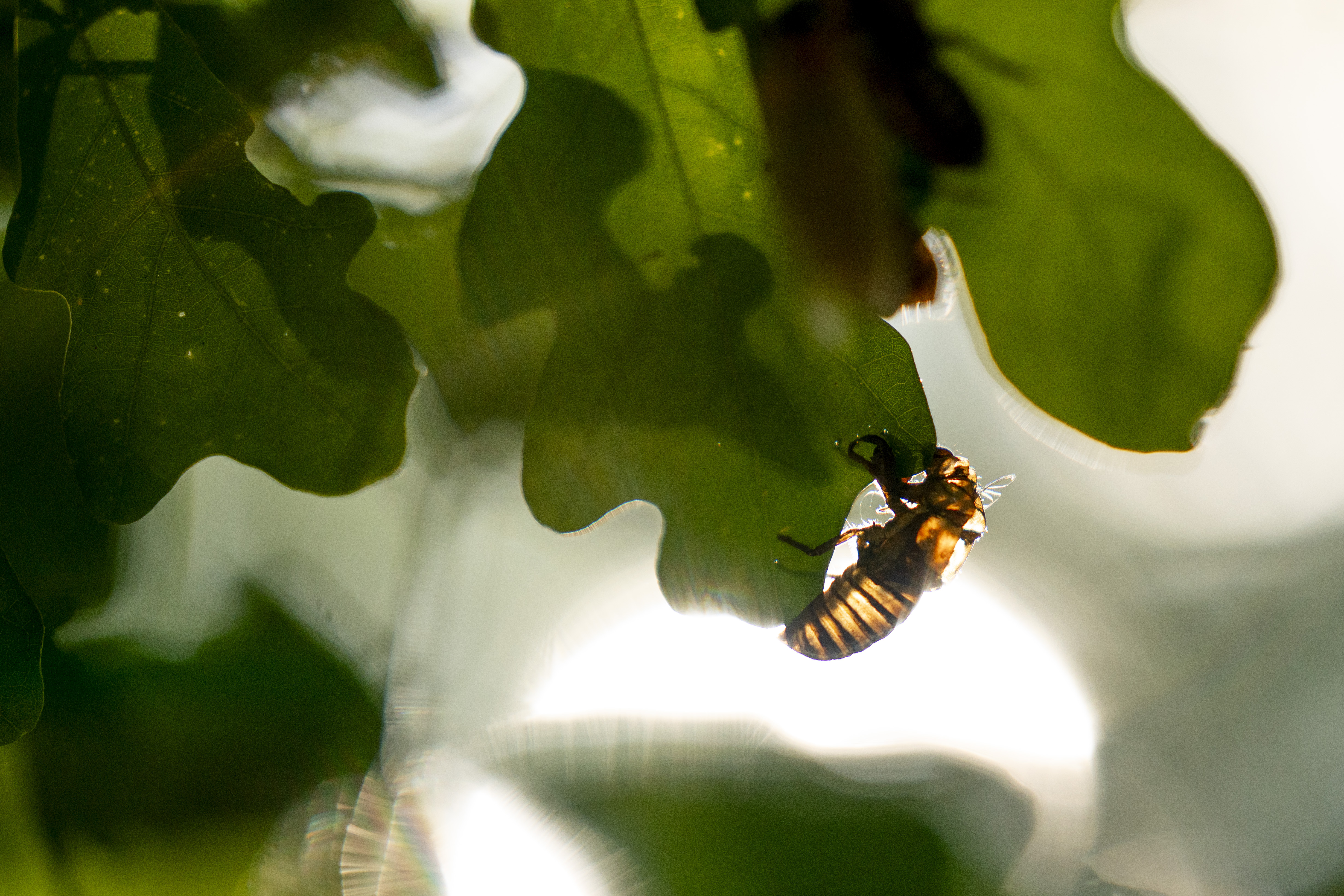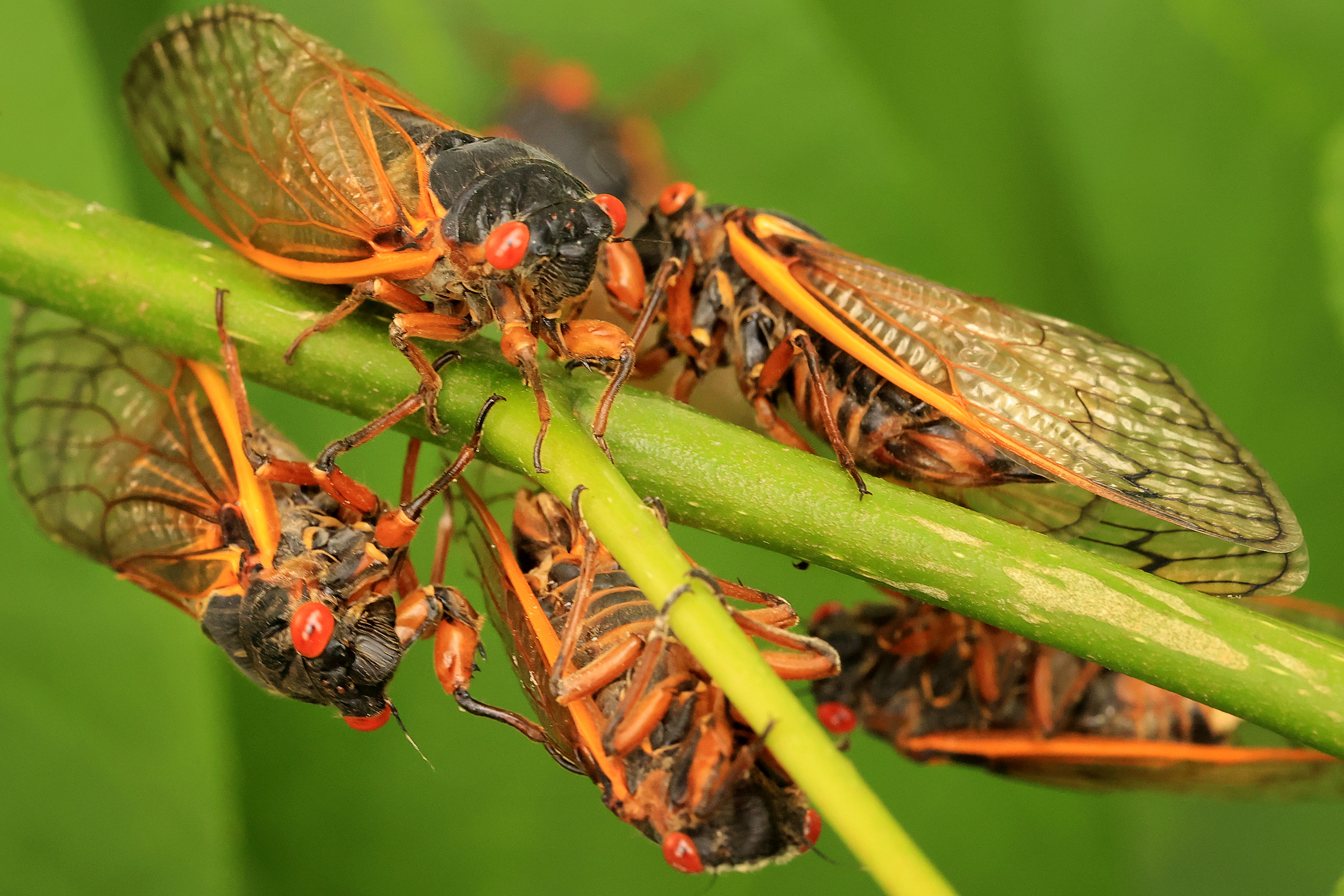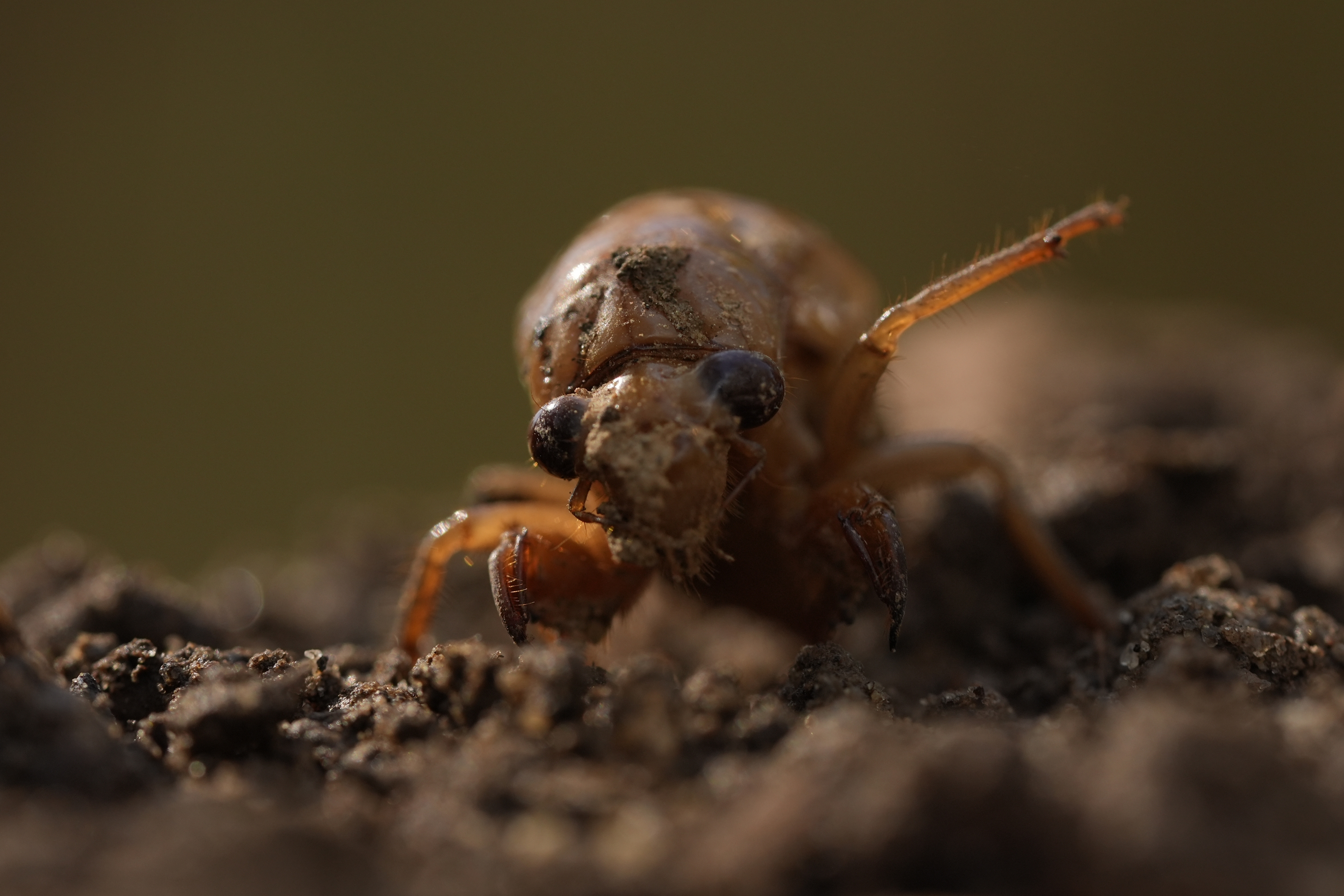While peak cicada emergence hasn't quite hit Illinois, individual sightings of cicadas in the Chicago area has begun as the state expects a historic emergence of two broods at once.
"The periodical cicadas have been emerging for the last week and a half," Stephanie Adams, Plant Pathologist at Morton Arboretum in Lisle said last week, Brood XIII, which will soon overspread across the entire Chicago area. "We found them both out here in our landscape and also in our East woods."
For the past 17 years, billions of periodical cicada spawn from Brood XIII have been living underground in the Chicago area, tapping into fluid from plant roots. They are expected to fully emerge in mid-May and June -- and once they burrow up, you can expected them to be everywhere.
When will the billions of cicadas emerge?
According to Adams, the emergence of the first cicadas came about two weeks ahead of the historic average. It will continue to be sporadic, as soil temperature, mulch and turf grass all impact cicadas differently. For example, the soil is warmer near pavement, so cicadas in the those spots are expected to emerge quicker.
"Research shows that the particular night of the periodical cicadas’ emergence depends on soil temperature," a post from the National Weather Service said. "Cicada juveniles, or nymphs, emerge after a rainstorm when the soil temperature at 8 inches in depth exceeds approximately 64°F."
According to NBC 5 Meteorologist Alicia Roman, soil temperature across Chicago has been in the low 60s over the past few days. In the suburbs though, the soil has been even warmer, Roman said.
Greencast, a website that tracks soil temperature across the country, noted that Lisle's soil temperature hit 66 degrees the last week in April, and remained above 65 degrees since. In Chicago, soil temperature also hit 66 degrees in April, though the website showed it fell below 64 degrees in the past few days.
Allen Lawrance, associate curator of entomology at the Peggy Notebaert Nature Museum in Chicago, said that typically, the big periodical cicada emergence comes in mid-May following a night of showers.
"A warm rain at the right time will often kick off their mass emergence," Lawrance said. "So we will have to see."
Feeling out of the loop? We'll catch you up on the Chicago news you need to know. Sign up for the weekly Chicago Catch-Up newsletter here.
According to the NBC 5 Storm Team, temperatures this week are expected to be in the 60s and 70s, with rain and storms midweek.
Where in Illinois will the cicadas emerge?
The Northern Illinois Brood, or Brood XIII, will be most seen in parts of northern Illinois and Indiana, and possibly even in Wisconsin, Iowa and parts of Ohio. This brood will be the most prominent in the Chicago area for the upcoming emergence.
Meanwhile, Brood XIX, or the Great Southern Brood cicadas, have a more widespread population, covering parts of Missouri, Illinois, Louisiana, North Carolina, Virginia and Maryland.
"Brood XIX is arguably the largest (by geographic extent) of all periodical cicada broods, with records along the east coast from Maryland to Georgia and in the Midwest from Iowa to Oklahoma," the University of Connecticut reports. "Although 13- year cicadas are generally considered to have a southern distribution, the northernmost known record of this brood is in Chebanse, IL, roughly 75 miles from Chicago’s Loop."
The emergence is set to last through mid-June.
Here's a map of what to expect in Illinois, according to data from the USDA Forest Service.
"Somewhere around Central Illinois, probably like around Springfield, is what some researchers are predicting we may see some overlap of these two ... different broods," Dana said. "It's not going to be a large area. But there will likely actually be some mating happening between these two broods, which is going to be really exciting."




